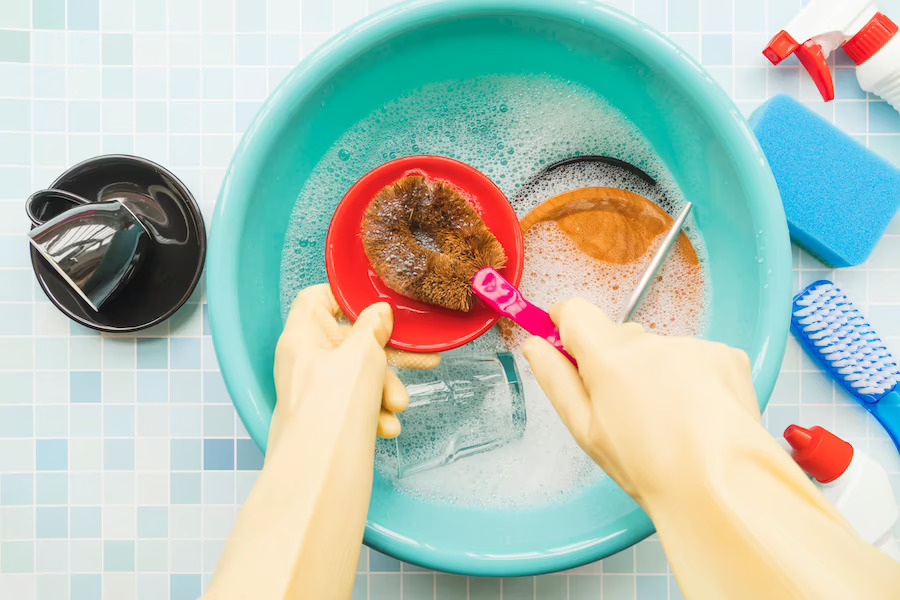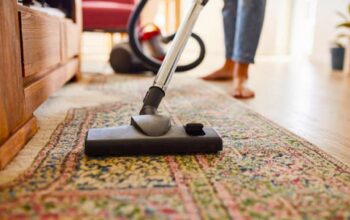Plastic Tupperware is a convenient and practical way to store food, but it can be frustrating when it becomes stained with stubborn food residue that refuses to come off. These stains can be unsightly and make your Tupperware look unclean, and can even affect the taste of your food. Luckily, there are several ways to remove stains from plastic Tupperware, and in this article, we’ll discuss some of the best methods.
Why Plastic Tupperware Gets Stained
Before we dive into how to remove stains, it’s important to understand why plastic Tupperware gets stained in the first place. One reason is that certain foods are more prone to staining plastic, such as tomato-based sauces, curries, and oily foods. Another reason is that plastic Tupperware is porous, which means that it can absorb the colors and odors of the foods that it holds. Over time, this can lead to discoloration and staining.
Method 1: Baking Soda and Water
One of the easiest and most effective ways to remove stains from plastic Tupperware is to use baking soda and water. Here’s how:
- Fill your Tupperware with warm water and add a tablespoon of baking soda.
- Stir the mixture until the baking soda dissolves.
- Let the Tupperware soak for several hours, or overnight if the stains are particularly stubborn.
- Rinse the Tupperware with warm water and dry it thoroughly.
Method 2: White Vinegar and Water
Another effective method for removing stains from plastic Tupperware is to use white vinegar and water. Here’s how:
- Fill your Tupperware with equal parts white vinegar and water.
- Let the Tupperware soak for several hours, or overnight if the stains are particularly stubborn.
- Rinse the Tupperware with warm water and dry it thoroughly.
Method 3: Lemon Juice and Baking Soda
If your plastic Tupperware has tough stains that won’t come off with just baking soda or vinegar, you can try using lemon juice and baking soda. Here’s how:
- Sprinkle a small amount of baking soda onto the stained area of your Tupperware.
- Squeeze fresh lemon juice over the baking soda until it forms a paste.
- Let the paste sit on the stains for 15-20 minutes.
- Rinse the Tupperware with warm water and dry it thoroughly.
Method 4: Dish Soap and Hot Water
If you don’t have any baking soda, vinegar, or lemon juice on hand, you can still remove stains from your plastic Tupperware using dish soap and hot water. Here’s how:
- Fill your Tupperware with hot water and add a few drops of dish soap.
- Use a sponge or dishcloth to scrub the stains gently.
- Rinse the Tupperware with warm water and dry it thoroughly.
Method 5: Bleach and Water
If none of the above methods work, you can try using a bleach solution to remove stubborn stains from your plastic Tupperware. However, it’s important to be careful when using bleach, as it can be harsh and may damage your Tupperware if used improperly. Here’s how to use bleach safely:
- Fill your sink or a large container with water and add a small amount of bleach (about 1 tablespoon per gallon of water).
- Place your plastic Tupperware in the water and let it soak for 5-10 minutes.
- Remove the Tupperware from the bleach solution and rinse it thoroughly with warm water.
- Dry the Tupperware thoroughly before using it.
Tips for Preventing Stains in the Future
Now that you know how to remove stains from plastic Tupperware, it’s important to take steps to prevent them from occurring in the first place. Here are a few tips to help keep your Tupperware stain-free:
- Don’t microwave your Tupperware unless it is labeled as microwave-safe. Heating plastic can cause it to warp, which can make it more prone to staining.
- Avoid storing foods that are prone to staining, such as tomato-based sauces and curries, in plastic Tupperware for extended periods of time.
- Wash your Tupperware promptly after use. The longer you wait to clean it, the more likely it is that stains will set in.
- Use a separate sponge or dishcloth to clean your plastic Tupperware. Using the same sponge or dishcloth that you use for cleaning other dishes can transfer food residue and stains to your Tupperware.
Conclusion
Removing stains from plastic Tupperware may seem like a daunting task, but with the right tools and techniques, it can be done quickly and easily. Whether you choose to use baking soda, vinegar, lemon juice, dish soap, or bleach, be sure to follow the instructions carefully to avoid damaging your Tupperware. And remember, the best way to prevent stains from occurring is to take good care of your Tupperware and clean it promptly after each use.
FAQs
Is it safe to use bleach on plastic Tupperware?
While bleach can be effective at removing stains, it can be harsh and may damage your Tupperware if used improperly. Be sure to dilute the bleach with water and only use a small amount.
Can I use the same sponge to clean my Tupperware and other dishes?
It’s best to use a separate sponge or dishcloth to clean your Tupperware to prevent food residue and stains from transferring.
What should I do if my plastic Tupperware is discolored but not stained?
Discoloration can be caused by a variety of factors, including exposure to heat and certain foods. Try soaking your Tupperware in a solution of white vinegar and water to see if it helps to remove the discoloration.
How often should I replace my plastic Tupperware?
It’s a good idea to replace your plastic Tupperware every 2-3 years to ensure that it is in good condition and free from cracks or other damage that can harbor bacteria.
Are there any foods that should not be stored in plastic Tupperware?
Some foods, such as acidic foods like citrus and tomato-based sauces, can cause plastic to break down over time. Consider using glass or stainless steel containers for these types of foods.








